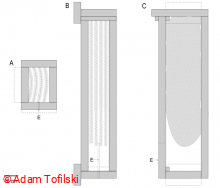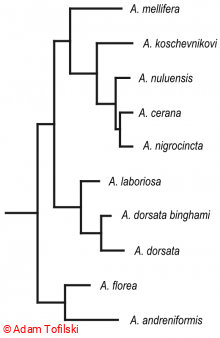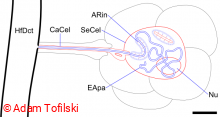Drone reproductive system
- Read more about Drone reproductive system
- Log in to post comments
Reproductive system of honey bee drone.
Blb - bulb of penis
Dej - ductus ejaculatorius
fbl - fimbriated lobe of penis
MGld - mucus gland
Tes - testis
Vd - vas deferens
Vsm - vesicula seminalis
- Read more about Drone reproductive system
- Log in to post comments





